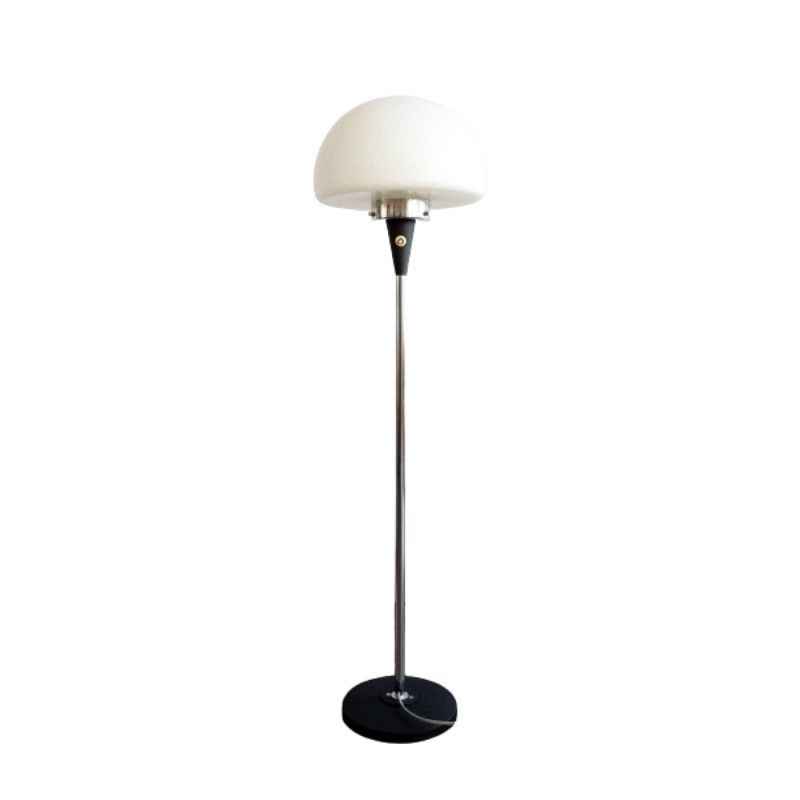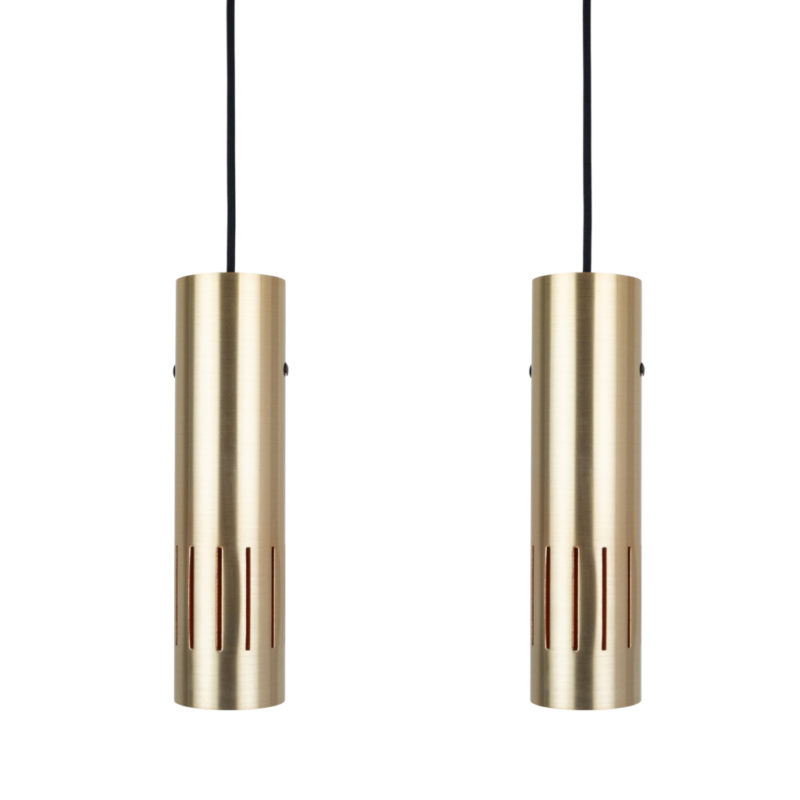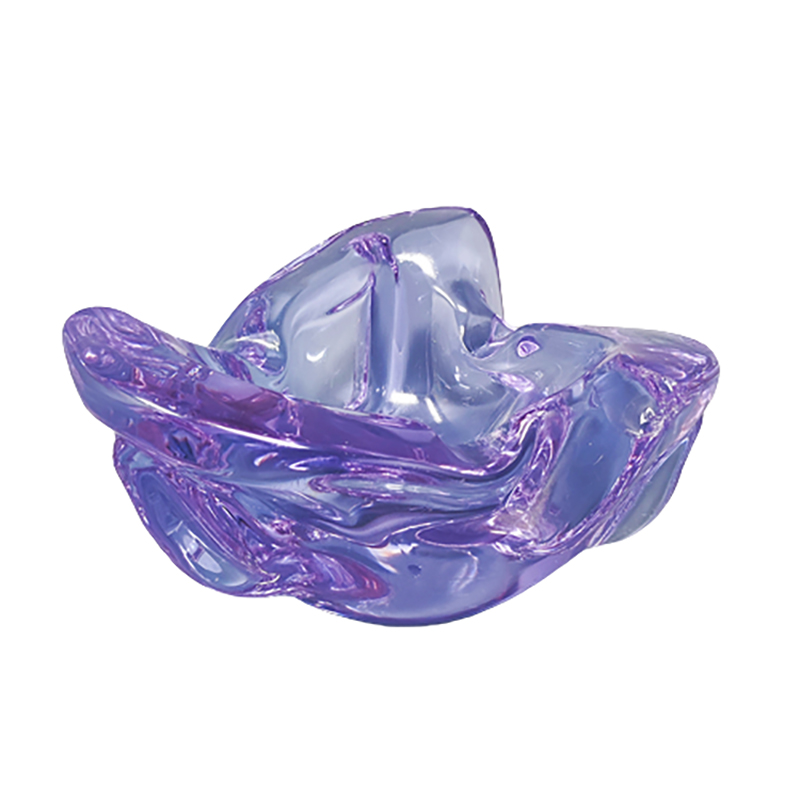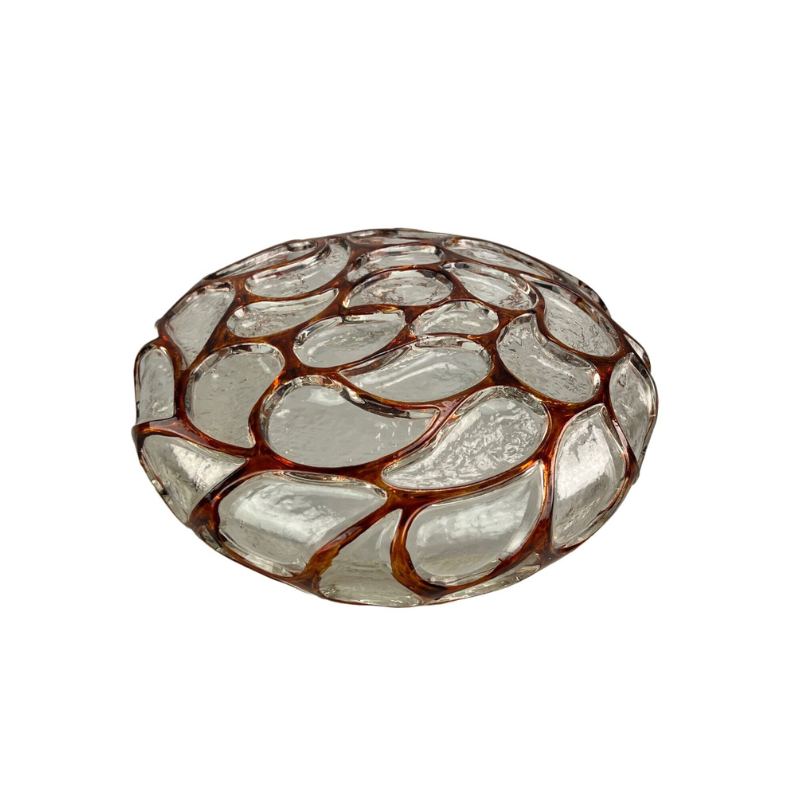Just picked up 6 Grand Prix chairs. Each one has veneer chips here and there but one has a structural issue. At the bend, these is a crack through the ply layers which causes the seat the flex back too much ans obviously eventually will snap. Is there anyway to fix this? Also, how can I, or should I even, patch the veneer chips?


For the
broken bend: remove any chips which prevent the laminae from being compressed tightly back together, then inject glue with a needle and clamp with 1" thick very firm rubber foam between plates of wood -- or similar -- to achieve a tight glue-up. Test the clamping method "dry" before proceeding with glue.
I had this happen on...
I had this happen on something that didn't sit properly in a mold once.
1. put newspaper down on floor
2. get some polyurethane adhesive and a syringe with a wide open nozzle, the type used to wash your ears out with, it's too thick to go down a needle.
3. tape off the surface around the crack of the chair with masking tape, the glue is foamy and messy and destructive of any polyurethane finish.
4. Check how deep the crack is to get an idea of deep it runs and how much glue to use, a strip of thick paper is good, if its deep you'll have to use more glue, open the crack up a bit and just keep squirting it down, work it slightly by opening and closing the spit
5. Do the other side if you have to
6. 2 ways to clamp it, you could clamp it as SDR suggested or take a belt or other sort of tie down strap and wrap it around the chair then tighten it up a little, not too much. I'd leave it for 2 full days, DO NOT TOUCH! If its foaming a lot you can wipe it off, just be super careful about getting it on your hands then touching the chair.
7. Once set carefully take off the excess glue with a stanley knife and lightly sand then rub over that area with a little wax.
8. Even then put it at a place at the table that is used less often than the others.
The chips? Glue down anything that is lifting, if it really bothers you some hard brown filler wax would improve things
Good luck.
That
sounds good. The critical objective, as I see it, is to assure that the break(s) are ready to go back together with no obstruction to a completely closed and tight repair. Typically, some fibers or broken pieces of laminae will become loose or offset within the break, and will not compress and/or relocate to their original position; these will absolutely prevent complete closure of the piece, thus preventing proper adhesion of the glue over a more or less broad -- and critical -- area. Any amount of effort to identify and correct this condition prior to gluing is called for, I'm afraid -- and in the worst case, the job must be abandoned if the condition cannot be met. If the wood cannot be completely closed (while allowing for very minor interior gaps where material may be missing), the area of the break will present a "weak link" in the structure and will almost surely fail again under (typical) use,
The reason that I suggested clamps is that the "spring-closed" over-bend method may not tighten all areas of a break -- such as the portion of this subject project, at the edge and at the top in the center of the photograph, where portions of the plywood have sprung upward away from the (curved) plane of the wood. A combination of harder and softer pads may be called for to effect good pressure without damaging the surfaces. This clamping could be added to the spring technique -- the two methods are not mutually exclusive.
Polyurethane glue expands as it cures -- but wood layers not tightly compressed will be filled not with hard glue but with a foamy form of the glue, which cannot bind the wood together. Even a 1/16" gap is too weakly connected to be firm and permanent. The expansive nature of this glue is helpful in spreading some adhesive a bit further into an obscure part of a break; it might be helpful to let the glue expand a bit -- say five or ten minutes after application -- before applying pressure.
No amount of wishful thinking -- the bane of the immature craftsman -- will make up for thorough "worst-case" analysis and preparation, and (dry) testing, when difficult circumstances are at hand. And a badly-done repair is much worse than none at all, as newly-introduced glue, filling incompletely-closed breaks, will absolutely prevent later attempts to correct the situation. Most woodworking repairs must be done right the first time !
.
Not sure I agree about the epoxy but then again I've never liked it, agree about the clamping blocks though, fairly quick to trace a line and rout out some from scrap mdf or whatever, just be careful squeeze out doesn't stick them to the chair, waxed paper or packing tape on the blocks would help.
It looks to me like it would come back together quite cleanly,
even a second rate job would be pretty close to a first rate job strength wise if you clamp it right and leave it set properly.
The problem with epoxy, urethanes, and even some
EVA's is that they can't effectively be undone, if need be.
In this case, as with most wood-to-wood repairs, good old-fashion hot hide glue would be my preference, but most folks don't have it on hand. It would also be my top choice for finicky veneer dutchmen. Cleaning up any excess is really a breeze and, in the worst case, reversing a hide glue bond is usually a fairly straightforward procedure.
The reason epoxy sprung to mind (pardon the pun) is due to its excellent gap-filling and structural properties, resistance to creep, and the ability to control both viscosity and open time. The inability to remove the old glue residue from between the delaminated plys, in this situation, may contribute to compatibility issues and is also a good argument for using epoxy. The risk of causing permanent damage is real with epoxies, however, and its proper application is, again, likely a bit beyond the capabilities of your average DIY-er.
You may be right about the PU, though. I really have little experience with it that I didn't find frustrating.
thanks
Just checking in. I should have stated that when i took the picture of the break in the bend I was applyng back pressure on the chair to open the gap to show the damage. When no pressure is exerted the crack is bairly noticable.
Can I use Gorilla glue or should I avoid that?
The damage is done.
If you are determined to attempt the repair yourself, go ahead and use whatever you're comfortable with. Just try and work the glue as far into the separated plys as possible without creating a mess of sqeeze-out when clamped. Neatness counts, as does planning. Keep in mind, though, that you only get one chance with modern glues. You flub it, you're done.
Heath, I don't know what's available for epoxies down under,
but this is my top choice of suppliers. Great reference resource, as well.
http://www.westsystem.com/ss/
If you need any help, please contact us at – info@designaddict.com









